Key takeaways:
- Rejection letters can provide valuable feedback, helping researchers refine their work and improve future submissions.
- Perseverance in research fosters resilience, turning setbacks into opportunities for personal growth and deeper insights.
- Analyzing rejection letters can reveal patterns and broader trends, guiding researchers to adapt their work to align with current academic interests.
- Developing a resilient mindset involves embracing setbacks, reflecting on lessons learned, and viewing rejection as a stepping stone toward success.
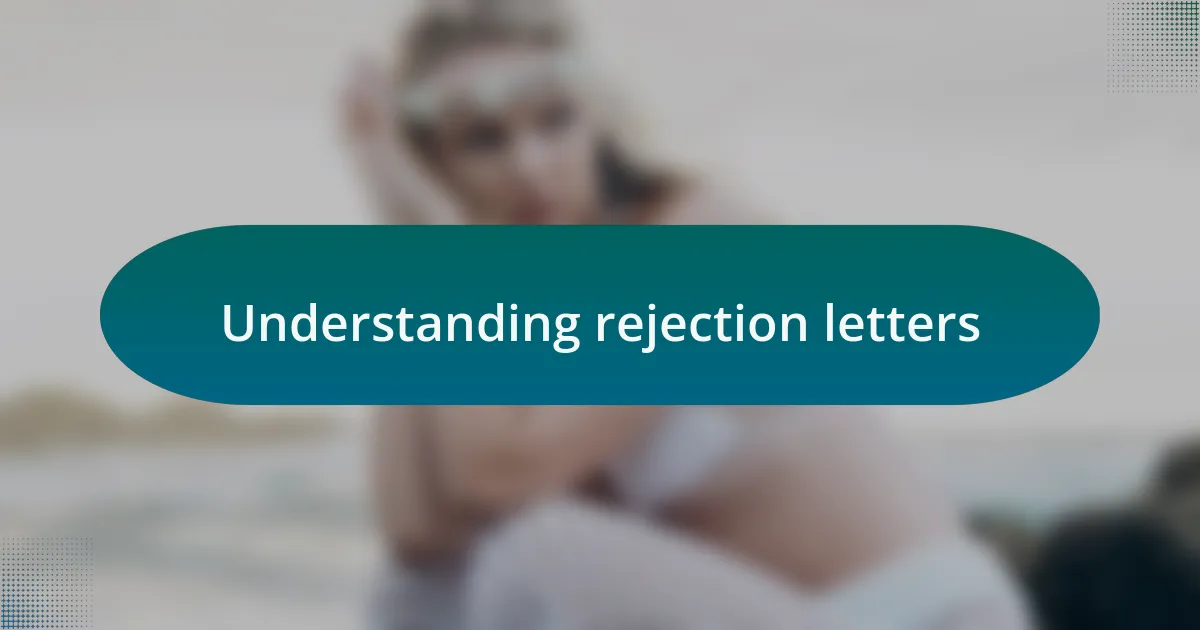
Understanding rejection letters
Rejection letters can feel like a punch to the gut, especially when you’ve poured countless hours into crafting a proposal. I remember receiving my first rejection; it stung not only because of the loss of opportunity but because I had invested my hopes into that submission. It’s natural to feel disheartened, but understanding the bigger picture behind these letters can transform that experience.
While rejection is often seen as a final verdict, it can actually be an invitation to grow and refine your work. I once received a detailed rejection that highlighted specific areas where my research could improve. Rather than seeing it as a setback, I viewed it as constructive feedback that ultimately led me to a much stronger proposal. Have you ever considered how such insights can shape your future submissions?
It’s also worth noting that a rejection doesn’t always reflect the quality of your research. Sometimes, it’s simply a matter of fit or timing. I’ve learned that many successful researchers faced multiple rejections before hitting their stride. Isn’t it curious how some of the most significant advancements come from those who initially faced rejection? Embracing this understanding can help shift your perspective, making you more resilient in the face of future challenges.
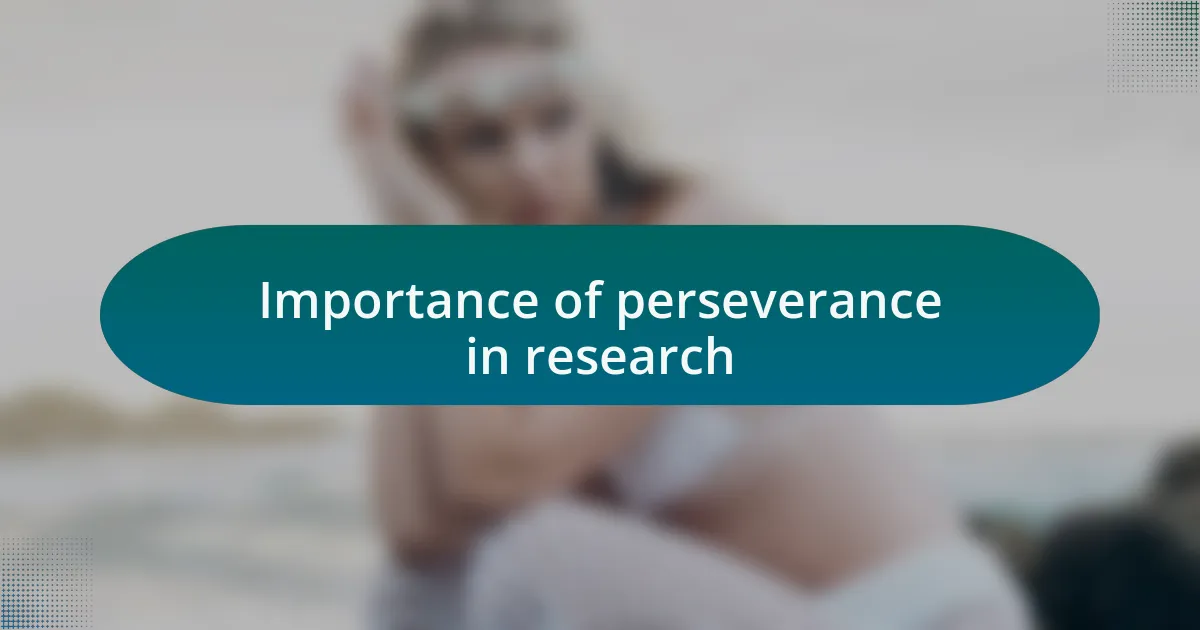
Importance of perseverance in research
Perseverance in research is crucial because it fosters resilience against the inevitable setbacks we all face. I remember a time when my enthusiasm for a groundbreaking project dimmed under the weight of repeated rejections. Did I just want to give up? Absolutely! But pushing through those moments taught me that persistence often paves the way to unexpected breakthroughs and deeper insights.
It’s fascinating how perseverance can lead to a much clearer understanding of our challenges. I once spent months refining a project that had initially been rejected multiple times. Through each revision, I discovered more about the nuances of my subject and the expectations of the review process. Isn’t it interesting how challenges can lead to personal growth and an expanded skill set? Embracing perseverance transformed my rejections into stepping stones toward success.
Moreover, the journey of research is rarely a straight path; it’s often filled with twists and turns. The ability to stay committed, despite the hurdles, has made me appreciate the value of each experience, even the difficult ones. Think about it: how many innovations in science were born out of failed attempts? Those who persist often find that the struggle becomes a powerful teacher, shaping not only their work but also their character as researchers.
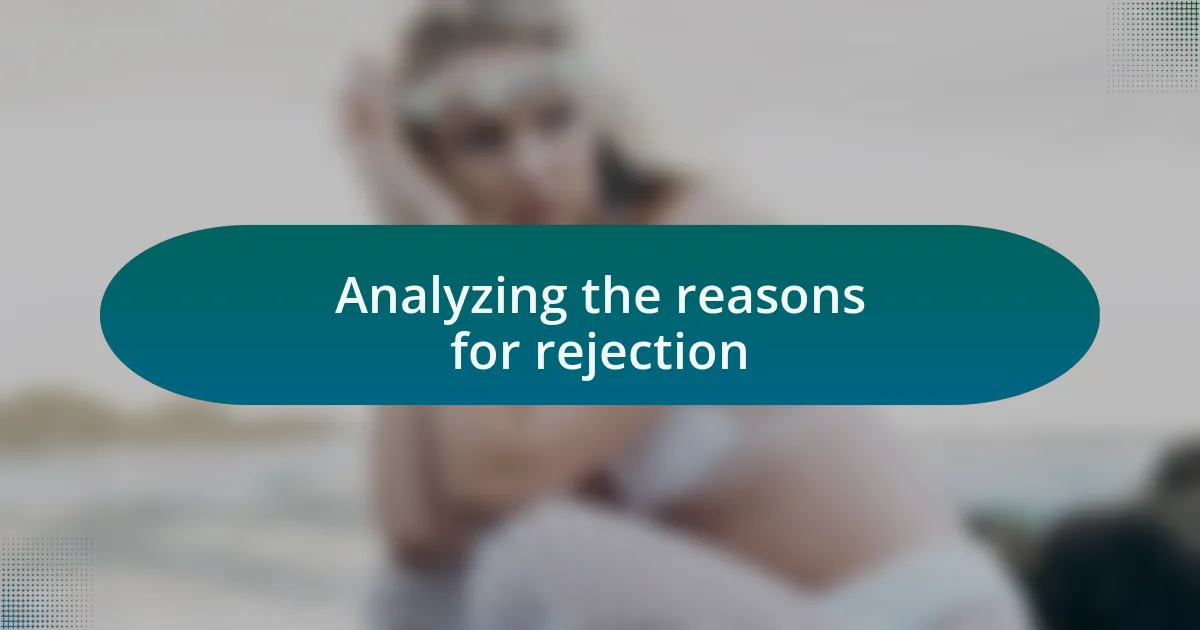
Analyzing the reasons for rejection
Analyzing rejection letters can illuminate patterns that are often overlooked. I recall dissecting a rejection I received early on. It wasn’t just the words on the page; it was the feedback that mattered. I noticed that criteria relating to methodology and clarity were frequently cited. This reflection led me to realize that concise communication and a clear research design might be the areas I needed to sharpen.
Sometimes, the reasons for rejection are more personal than technical. In one instance, I submitted work that was undoubtedly passionate but perhaps lacked an objective perspective. I asked myself, was I too close to the subject matter? It became clear that stepping back to assess my research with a critical eye was necessary. Engaging with peers for feedback became a game-changer, allowing me to confront those emotional biases directly.
Another essential aspect of analyzing rejection letters is recognizing broader trends in the academic landscape. I learned that certain topics gain traction depending on current funding priorities or journal interests. Reflecting on these shifts helped me pivot my research in a direction that aligned more closely with emerging themes. Have you considered how shifting your focus might not just align with trends but also ignite your passion anew? Understanding these elements is crucial for adapting and growing as a researcher.
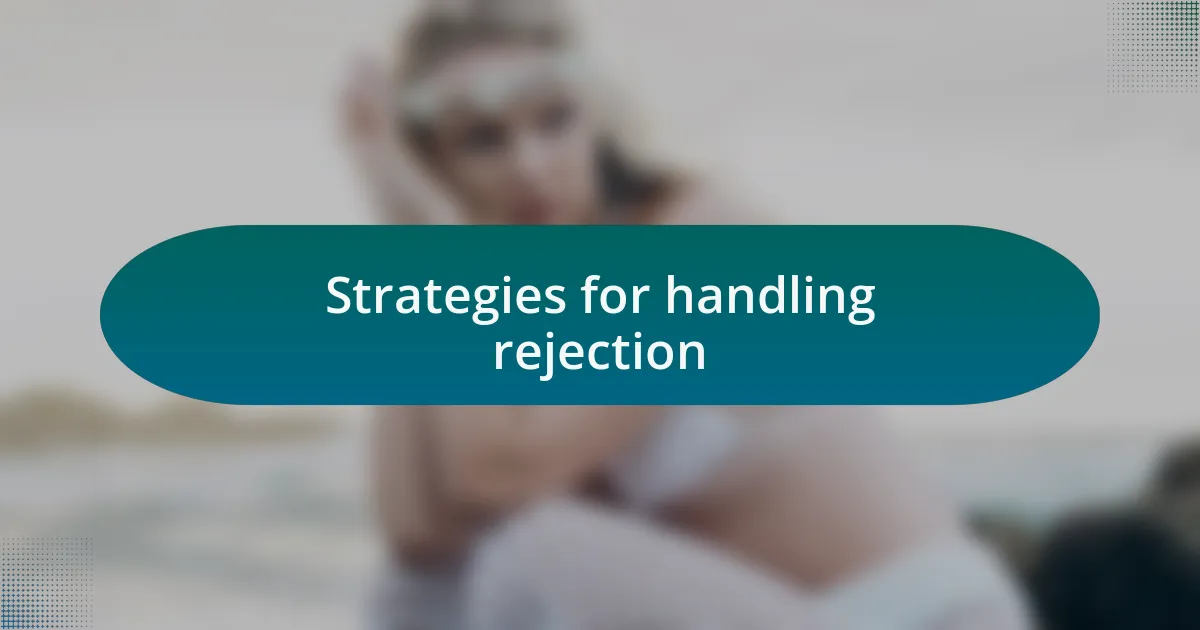
Strategies for handling rejection
One effective strategy for handling rejection is to actively seek constructive feedback from the reviewers, even if it stings at first. I remember a particularly harsh rejection where the comments felt overwhelming. Rather than shutting down, I reached out to a mentor who helped me parse through the critiques, transforming them into actionable steps. Have you ever considered that those comments, though tough to digest, could be the key to your growth?
Another approach I found invaluable is to allow myself a brief period of disappointment before regrouping. After an early setback, I needed to talk through my feelings with a trusted colleague. This emotional process allowed me to gain perspective and reevaluate my work without the fog of frustration clouding my judgment. How often do we give ourselves permission to feel before moving forward?
Finally, maintaining a growth mindset has been essential for me. When faced with rejection, I remind myself that every ‘no’ is part of a journey toward finding the right fit. I recall revisiting my research ideas and refining my hypotheses after several setbacks. It became evident that resilience not only nurtured my work but also enriched my passion for discovery. Have you thought about how each rejection could serve as a stepping stone rather than a stumbling block?
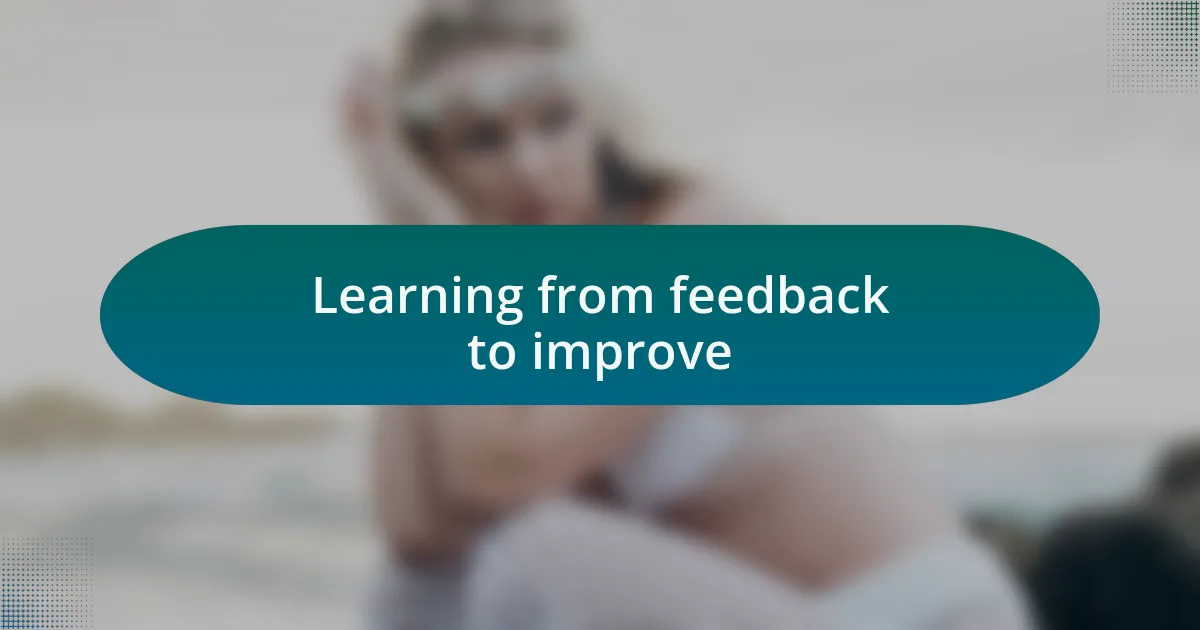
Learning from feedback to improve
When I receive feedback, I make it a point to carefully analyze the specific comments. One time, I reviewed a rejection letter filled with suggestions on my methodology. Instead of feeling defensive, I printed out the letter, highlighted key phrases, and sat down with my team to discuss them. This collaboration transformed what felt like defeat into a constructive brainstorming session that ultimately strengthened our project.
I find it helpful to view feedback as an opportunity for dialogue, not just a one-way street. There have been moments when I’ve felt discouraged by suggestions that seemed critical, but then, reflecting on them, I’ve realized they often contain the seeds of better ideas. Have you ever paused to consider how insights from others can challenge your assumptions and lead to innovative breakthroughs?
Ultimately, the most significant shifts in my work have come from revisiting my original ideas and pushing back against the comfortable. I recall a project where I was clinging to a specific hypothesis that several reviewers questioned. Instead of defending my position, I took a step back, opened my mind to alternative perspectives, and ended up uncovering a richer narrative. It’s in this process of reevaluation that I truly learned how to adapt and improve.
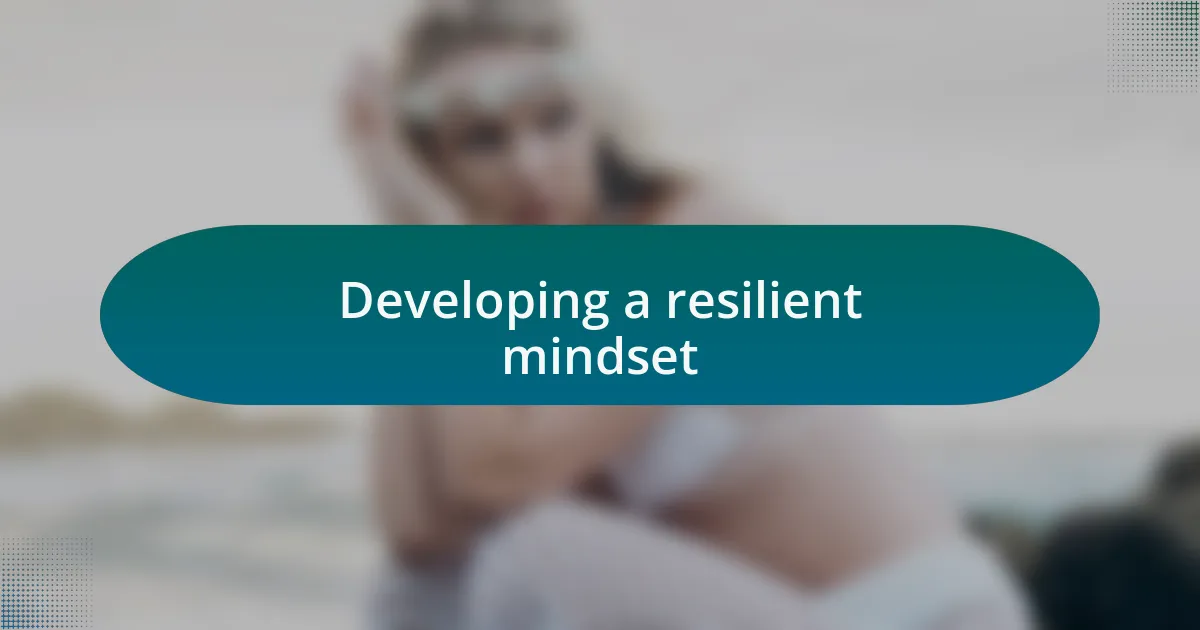
Developing a resilient mindset
Developing a resilient mindset is all about how we respond to setbacks. I remember a time when my proposal was met with a rejection that felt like a punch to the gut. Instead of wallowing in disappointment, I decided to embrace the experience as a chance to build fortitude. What I discovered in that moment was how resilience could transform my perspective, allowing me to see rejection not as a failure but as a stepping stone toward growth.
In those moments of disappointment, I often reflected on past challenges that had initially seemed insurmountable. I recall feeling overwhelmed by a project that didn’t go as planned; rather than giving up, I chose to focus on the lessons learned. How often do we underestimate our ability to bounce back? For me, recognizing my inner strength in those times has reinforced my resolve to keep moving forward, no matter the setbacks.
Cultivating resilience requires practice and intention. I started keeping a journal to document my feelings after receiving rejections. Over time, I noticed a pattern—each disappointment paved the way for new opportunities I hadn’t considered before. Isn’t it fascinating how a simple shift in perspective can unlock potential we never knew was there? This mindset has not only helped me navigate rejection but has also equipped me with the tools to approach future challenges with confidence and optimism.

Sharing personal experiences and insights
While navigating the ocean of research proposals, I’ve received my share of rejection letters that felt heavier than a lead weight. Each time, I allowed myself to sit with the initial sting—it’s normal to feel that initial wave of disappointment. But what I started doing next was crucial; I began dissecting those letters. What can I learn from their feedback? I remember one that pointed out the lack of clear objectives in my proposal. At first, it felt like a personal attack, but soon I realized how valuable that insight was for crafting a stronger proposal in the future.
Reflecting on my journey, I often think about the rejection that turned into an unexpected collaboration. After submitting an application that missed the mark, I reached out to the reviewers for advice. To my surprise, they were open to discussing my ideas, and this led to a deeper dialogue that not only improved my project but also expanded my professional network. Isn’t it interesting how a closed door can sometimes lead to an open window of opportunity? The interactions that followed reshaped my approach to research altogether.
Looking back, the experience of facing rejection has become an integral part of my growth. Each rejection letter comes wrapped in a lesson, waiting for someone willing to unpack it. I now view these letters as motivation—my personal map of what to avoid and where to improve. Have you ever stopped to consider the potential growth hidden within rejection? For me, those insights have forged a path that ultimately aligns with my goals, transforming setbacks into a springboard for future success.